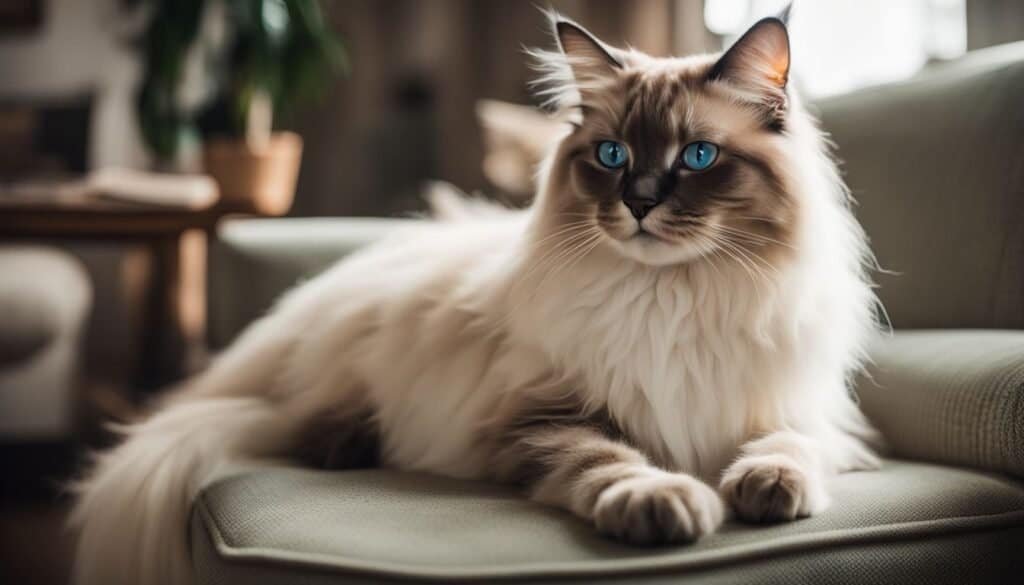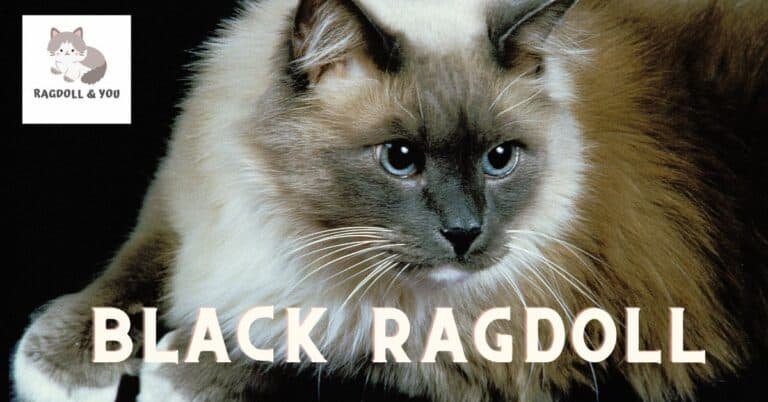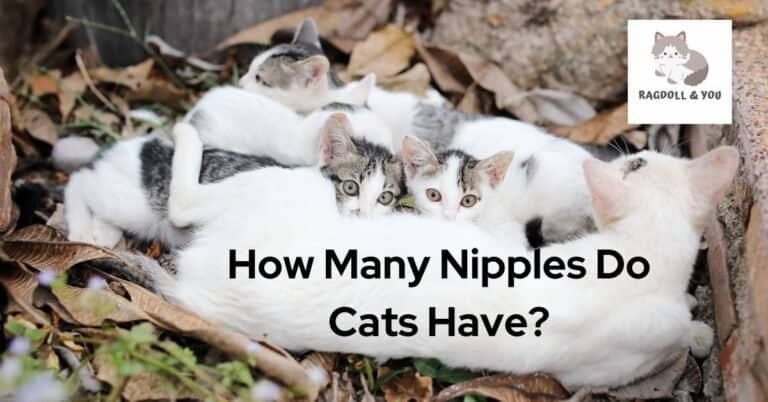23 Bad Things About Ragdolls That You Should Know
The Ragdoll is a beloved cat breed admired for its striking blue eyes and soft, fluffy fur. If you’re considering welcoming one of these affectionate cats into your home, it’s important to go in with realistic expectations. While Ragdolls make wonderful pets, there are some potential drawbacks to the breed that are worth considering.
In this article, we’ll explore some of the commonly discussed downsides of Ragdoll ownership. Our goal is to provide a balanced perspective to help you make an informed decision. Ragdolls have great qualities, but they may not be the ideal fit for every lifestyle. By understanding the realities, you can determine if a Ragdoll would thrive in your home.
Our aim isn’t to discourage you, but to offer a complete view so you and your potential Ragdoll can both live happily ever after.
This is why ragdolls may not be a good idea for all
1. Ragdoll Cats Are Known To Be Expensive
Getting a Ragdoll cat can cost you a lot of cash. They are one of the top expensive cat breeds worldwide. You might need to spend around £800-£1200 just for a kitten. This price tag is not all.
The real costs come after buying your pet. There’s more money to go out on food, vet bills and other care needs. These sweet pets don’t come cheap at all! Make sure your wallet can handle it before getting one of these cats home with you.
2. Ragdolls Are Indoor Cats
Ragdolls like staying inside the house. Outside dangers can harm them. Cars, dogs, and other cats can be threats. They also love being around people at home. If you let a Ragdoll outside, it may get lost or hurt.
They feel safe inside your home. Ragdolls love to play games with toys in the house. They enjoy sleeping on soft beds too! Make sure your house has enough space for them to run around and play.

3. Ragdoll Cats Need too Much Attention
Ragdoll cats are fun to have around, but they need a lot of love. If you don’t play with them, they might feel sad. These cats are not like other pet cats that enjoy alone time. Ragdolls always want to be part of the action in your home.
They love their humans so much that they can turn into loud pets if ignored. They can even attack your legs as a way to get attention! So think twice before leaving them on their own for too long.
You must have enough time each day to show them love and care.
4. Ragdoll Cats can be very vocal
Ragdoll cats are known for being very vocal. They use their voice to communicate with their owners and express their needs. This breed of cat can range from soft chirping sounds to loud meowing.
While not all Ragdolls are exceptionally talkative, some individuals can be quite vocal. So if you’re considering getting a Ragdoll, be prepared for the possibility of having a chatty companion by your side.
5. Ragdoll Cats Can Cause Allergic Reactions
Ragdoll cats can cause allergic reactions in some people, especially those who are sensitive to cat allergens. Contrary to popular belief, ragdolls are not hypoallergenic because they still produce dander that can trigger allergies.
While it’s true that they lack an undercoat, which reduces shedding and dander production compared to other breeds, there is still a possibility of experiencing allergic symptoms around ragdoll cats.
Flea bites on ragdoll cats can also lead to allergies in humans. Therefore, if you have allergies or sensitivities to cats, getting a ragdoll as a pet may not be the best idea.

6. They Shed Fur
Ragdolls are known for shedding a lot of fur. It’s not just during certain times of the year – they shed all the time! Their semi long-haired coat requires regular grooming to prevent knots and tangles.
If you’re not prepared to spend time brushing them regularly, then a ragdoll may not be the best choice for you. Keep in mind that they shed more fur compared to other cats, so be ready for some extra cleaning around your home if you decide to bring one into your family.
7. They Can Be Destructive
Ragdoll cats can be destructive if they get bored or don’t receive enough attention. They might scratch furniture, pull up carpets, or engage in other destructive behaviors. It’s important to provide them with toys and playtime to keep them mentally stimulated and prevent destructive behavior.
Leaving Ragdolls alone for long periods of time can also lead to emotional distress and more destructive behavior. These cats require attention and companionship to prevent them from becoming destructive.
8. They Need to Be Fed a High-Quality Cat Food
Feeding Ragdolls a high-quality cat food is crucial for their health. Vets recommend this to ensure they get the right nutrients and prevent potential illnesses. It’s not a good idea to give them homemade meals, as they may lack essential nutrients.
A high-quality cat food should have enough calories and easily digestible protein. This ensures that Ragdolls receive the necessary nutrition to thrive. So, make sure you choose a good quality cat food for your Ragdoll to keep them healthy and happy.

9. Ragdoll Cats need regular checkups
Regular checkups are necessary for the health and well-being of Ragdoll cats. These checkups help identify any potential health issues early on, ensuring that they receive proper care.
Vaccinations and preventive measures are also part of these regular visits to keep Ragdolls healthy. By taking them to regular checkups, you can ensure that your Ragdoll cat lives a long and happy life.
So, make sure to schedule those important vet appointments regularly!
10. Ragdolls Need Regular Grooming
Ragdoll cats need regular grooming to keep their beautiful semi long-haired coat in good condition. Here are some reasons why regular grooming is important for Ragdolls:
- Prevents Knots and Tangles: Regular brushing helps prevent knots and tangles from forming in their fur, which can be uncomfortable for them.
- Reduces Hairballs: Grooming helps remove loose hair, reducing the chances of hairballs forming in their digestive system.
- Promotes Healthy Skin: Brushing stimulates the production of natural oils in their skin, keeping it healthy and preventing dryness.
- Minimizes Shedding: Regular grooming removes dead hair from their coat, reducing the amount of shedding in your home.
- Bonding Time: Grooming sessions provide an opportunity for you to bond with your Ragdoll cat and strengthen your relationship.
11. Ragdolls Are Strictly Indoor Cats
Ragdolls are strictly indoor cats. It is recommended to keep them inside your home because they have a friendly and trusting nature. Indoor living provides a safer and healthier environment for them.
It also reduces the chances of Ragdolls getting into fights with other animals. Additionally, keeping Ragdolls indoors helps prevent them from becoming stressed or anxious. By staying indoors, you can also better control their diet and prevent them from hunting wildlife.
12. They are Too Trusting
Ragdolls have a trusting nature, which means they are easily influenced and can be too trusting of people. This can be a disadvantage because it puts them at risk of mistreatment or abuse.
They may not recognize danger or understand when someone is being unkind to them. It’s important for owners to be cautious and protect their ragdoll cats from potential harm.

13. They Are Prone to Obesity
Ragdoll cats have a tendency to become overweight or obese, with almost half of them falling into this category. This is mainly because they are naturally lazy and don’t move around as much as other cat breeds.
Unfortunately, being overweight can lead to various health problems for Ragdolls, such as diabetes and urinary tract infections. It’s important for their owners to monitor their weight and provide them with a balanced diet and regular exercise to keep them healthy.
14. They Are Not Good Mousers
Ragdoll cats are not known for their hunting skills or ability to catch mice. Unlike some other cat breeds, they are not considered to be good mousers. This can be a drawback for owners who live in areas with a high mouse population or who want their cat to help control pests in their home.
Ragdolls may simply lack the instinct or drive to actively hunt and kill mice like other more active cat breeds. Therefore, if you’re looking for a cat that excels at catching rodents, a ragdoll may not be the best choice for you.
15. Ragdolls Have A High Cost of Maintenance
Ragdolls can be quite expensive to take care of. They require regular veterinary check-ups, vaccinations, and preventive treatments for fleas and ticks. Additionally, their grooming needs can add up, as they have long fur that requires regular brushing to prevent matting and keep it looking nice.
Ragdolls also need a high-quality diet tailored to their specific nutritional needs. All of these factors contribute to the higher cost of maintaining a happy and healthy Ragdoll cat.
16. They Require a Litter Box
Ragdoll cats are particular about their litter boxes. They need a clean and well-maintained litter box that is only for them. Sharing a litter box with other pets may make them hesitate.
It’s important to provide a spacious and large litter box for Ragdolls. Also, they may prefer using something other than a litter box that is located in a noisy or busy area of the house. So, when you have a Ragdoll cat, make sure to give them a dedicated and peaceful space for their bathroom needs.

17. Most Ragdoll Cats Can Bite Unnecessary For Attention
Ragdoll cats tend to bite when they want attention. This behavior is common among them and can be frustrating for their owners. It’s important to understand that biting for attention is not aggressive behavior but rather their way of getting your attention.
To prevent this, give your Ragdoll cat enough playtime and mental stimulation throughout the day. Engage in interactive play sessions with toys, provide scratching posts and climbing structures, and spend quality time with them.
By proactively addressing their need for attention, you can help minimize the biting behavior in most Ragdoll cats.
18. Most Ragdoll Cats Have Bad Sleeping Postures
Ragdoll cats are known for their unique sleeping postures, and it’s no surprise that many of them have bad sleeping positions. They often sleep on their backs, which can look uncomfortable to us humans.
However, there are a few reasons why they choose this position. Some theories suggest that Ragdolls sleep on their backs because it’s comfortable for them or because they want to show off or seek attention.
Regardless of the reason, it’s important to note that Ragdolls may not be resistant to pain and can feel discomfort due to their sleeping postures. So, if you see your Ragdoll cat sleeping in a strange position, don’t worry too much – it might just be how they prefer to sleep!
19. They Cannot Be Left Alone for Long Periods of Time
Ragdolls are friendly and social cats that thrive on human companionship. They cannot be left alone for long periods of time as they can become bored, anxious, and even depressed. When left alone, ragdolls may exhibit destructive behavior such as scratching furniture or tearing up carpets.
They need constant stimulation and interaction to stay happy and content. Leaving a ragdoll cat alone for extended periods without any human contact can lead to emotional distress and behavioral problems.
It is important to consider a ragdoll’s needs before bringing one into your home, especially if you have a busy lifestyle or frequently travel.
20. Ragdoll Cats Eat A Lot And Can Be Picky With Food
Ragdoll cats have big appetites and tend to eat a lot. They need a balanced diet to stay healthy. However, they can also be picky with their food choices. It’s important to provide them with high-quality cat food that meets their nutritional needs.
Ragdolls should have a mix of wet and dry food in their diet. Wet food provides essential moisture, while dry kibble helps keep their teeth clean. It’s best to avoid eating unhealthy human foods or excessive treats to prevent obesity, as Ragdolls are prone to weight gain due to their inactive nature.
Establishing a regular feeding schedule for Ragdoll kittens can help prevent digestive issues and upset tummies.

21. Ragdoll Cats Have Some Genetic Diseases
About 30% of Ragdoll cats have a genetic mutation that can cause hypertrophic cardiomyopathy, which affects the heart. This is a serious health condition. In fact, many diseases and health problems in Ragdolls are genetic in nature.
It’s important to be aware of these potential issues when considering getting a Ragdoll cat as a pet. Regular check-ups and monitoring their health can help catch any problems early on.
Some other common health problems in Ragdoll cats include obesity, urinary tract infections, hairballs, and kidney disease.
22. They Need to be Brushed Regularly
Ragdoll cats require regular brushing to keep their long coats healthy and free from tangles. Regular brushing helps prevent hairballs and keeps their fur looking its best. Neglecting regular grooming can lead to matting and discomfort for the cat. Ragdolls are known for their good hygiene habits and will usually groom themselves, but they still need the assistance of regular brushing to maintain their well-built bodies.
23. Ragdolls follow you all the time
Ragdolls are known for their loyal and affectionate nature. They love being around their owners and will often follow them wherever they go. This behavior is a testament to their strong bond with their owners.
Ragdolls enjoy constant companionship and thrive in households where they receive attention and interaction throughout the day. If you want a cat that will always be by your side, then a Ragdoll may be the perfect choice for you!
FAQs On Bad Things About Ragdolls:
Are Ragdoll cats good for beginners?
Yes, Ragdoll cats are generally good for beginners. They are known for being gentle, affectionate, and easy-going. They are also relatively low-maintenance, requiring only moderate brushing and nail trimming. Additionally, Ragdolls are typically good with children and other pets.
Is it cruel to keep Ragdoll cats indoors?
Keeping Ragdoll cats indoors is not cruel. It is recommended for their safety and well-being. Ragdolls are known for being trusting and friendly, which makes them vulnerable to dangers outside such as traffic or predators.
Keeping them indoors protects them from these risks and ensures they live a long and healthy life. Additionally, indoor living provides a more controlled environment where you can monitor their diet, exercise, and overall health more effectively.
With proper enrichment and indoor stimulation, your Ragdoll cat can still lead a happy and fulfilling life without needing to go outside.
Why do Ragdoll cats bite?
Ragdoll cats may bite for a few reasons. One reason is when they feel threatened or scared. If a Ragdoll cat is reprimanded harshly or handled roughly, they may react by biting as a defensive measure.
Another reason is that Ragdolls can become overly excited during playtime and accidentally bite their owners while playing. Additionally, some Ragdolls may exhibit aggressive behavior due to fear or stress, which can lead to biting incidents.
It’s important to remember that it can be challenging to discipline a Ragdoll cat since they are known for being gentle and easygoing pets.
What are some good things about ragdoll cats?
Ragdoll cats have some really good things going for them. First of all, they have beautiful blue eyes that can captivate anyone’s heart. Their long and silky coat is not only luxurious, but it also adds to their overall charm.
Ragdolls are known for being loyal and affectionate companions, making them excellent family pets. They are great with children and other animals, which makes them very adaptable. Another advantage is that ragdolls require relatively low-maintenance grooming compared to other long-haired breeds.
So if you’re looking for a beautiful, loving, and easy-to-care-for cat, the ragdoll might be the perfect choice for you!
What Makes Genius Litter Different from Ordinary Litter?
Genius litter stands out from ordinary litter because it is made of highly absorbent silica gel. This special material helps control and minimize odor in the litter box. What makes it even more unique is that it contains pH-detectors, which can indicate changes in your cat’s urine acidity.
This is important because changes in urine pH can be an early indicator of urinary tract issues. Unlike ordinary litter, Genius litter has the ability to monitor and detect these changes, helping you keep an eye on your cat’s health.
With Genius litter, you can provide a cleaner and healthier environment for your furry friend.
Why is Lysine so Important for Your Pet?
Lysine is a very important amino acid for your pet. It helps their immune system stay strong by making antibodies and enzymes. Lysine also helps with the production of collagen, which is what makes their skin, bones, and connective tissues healthy.
Cats especially need lysine because they can’t make it themselves and have to get it from their food. If your cat has feline herpesvirus infections, lysine supplements are often recommended to help manage the condition.
So, make sure your pet gets enough lysine in their diet to keep them healthy!
Do Ragdoll cats scratch furniture?
Ragdoll cats may scratch furniture at times, especially when they are feeling upset or threatened. However, compared to other cat breeds, Ragdolls are generally less aggressive when it comes to scratching furniture.
This is because they have a docile and easy-going nature. To prevent them from damaging your furniture, provide them with appropriate scratching posts and surfaces that they can use instead.
Regular nail trimming can also help minimize any potential damage caused by their scratching habits.
Why can’t Ragdoll cats go outside?
It is not recommended to let Ragdoll cats go outside because there are many potential dangers for them. They can easily become lost, injured, or even cat-napped due to their beautiful appearance and high purchase price.
Furthermore, about 30% of Ragdolls have a genetic mutation that makes them more likely to develop heart problems. By keeping them indoors, we can protect them from these risks and ensure their safety and well-being.
Are Ragdoll cats good for beginners?
Ragdoll cats can be good for beginners, especially those who are looking for a friendly and affectionate pet. These cats are known for their calm and gentle nature, making them easy to handle and care for.
They are great with families and get along well with other pets. However, it’s important to note that Ragdolls can be expensive to purchase and maintain, and they require regular grooming due to their long fur.
Additionally, they may have certain behavior problems that new owners need to be aware of. Overall, if you’re willing to provide the necessary love, attention, and care that Ragdolls require, they can make wonderful companions for beginners.
Do Ragdolls like being picked up?
Ragdolls typically enjoy being picked up and held. They have a calm and friendly temperament, making them tolerant of human contact. In fact, they love cuddling and being close to their owners.
Ragdolls are not prone to aggressive behavior, so they generally feel comfortable when being lifted off the ground. These cats crave human company and are very sociable, so picking them up can be a great way to bond with them and make them feel loved.
how to discipline a ragdoll cat?
Disciplining a ragdoll cat can be done effectively by following these steps:
- Identify the problem behavior: Observe your cat’s actions and determine what behavior needs to be addressed.
- Redirect their attention: Instead of punishing your cat, redirect their attention to a more appropriate activity or toy.
- Use positive reinforcement: Reward your cat when they display desired behaviors. This can be in the form of treats, praise, or playtime.
- Set clear boundaries: Establish consistent rules and boundaries for your cat to follow. Consistency is key to effective discipline.
- Use deterrents: If your cat is engaging in destructive behavior, use deterrents like double-sided tape on furniture or bitter sprays on cords to discourage them.
- Time-outs: If necessary, give your cat a time-out by removing them from the situation or providing a safe space for them to calm down.
- Avoid physical punishment: Never hit or physically punish your ragdoll cat as it can lead to fear and aggression.






![Ragdoll Cat Color And Pattern Guide [ 2024 Updated ]](https://ragdollandyou.com/wp-content/uploads/2023/08/Ragdoll-Colors-768x402.jpg)
